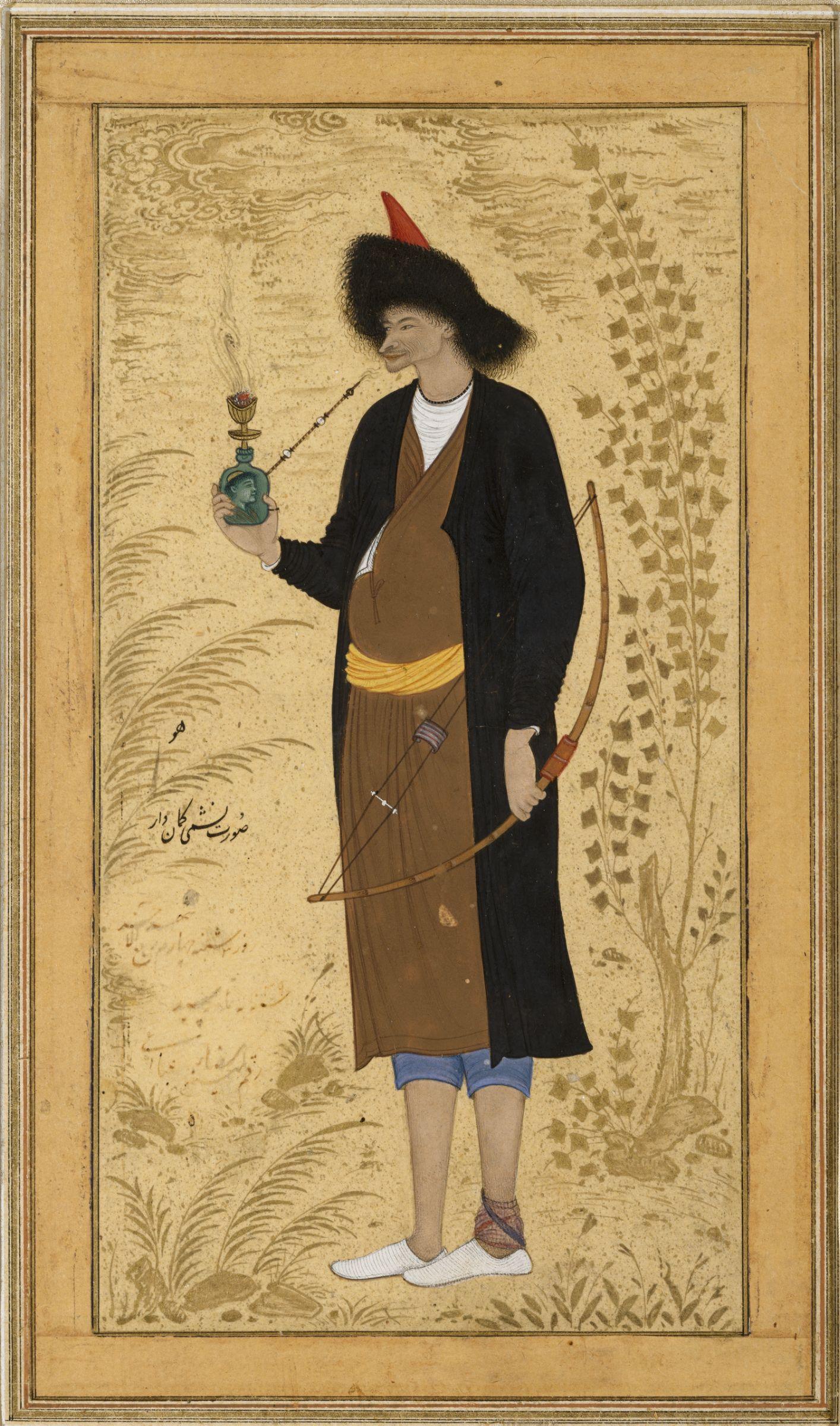
Try Amazon Audible Premium Plus and Get Up to Two Free Audiobooks
Nashmi the Archer
by Riza ‘Abbasi, 1630



Harvard Art Museums Object Number: 1960.197
Artist: Aqa Riza (Riza ‘Abbasi), Persian (c. 1560-70 - 1635)
Title: Nashmi the Archer
Work Type: painting
Date: 1630
Creation Place: Middle East, Iran, Isfahan
Period: Safavid period
Culture: Persian
Physical Descriptions:
. Medium: Ink, color and gold on paper
. Dimensions: image: 19 x 10 cm (7 1/2 x 3 15/16 in.)
Inscriptions and Marks:
. Signed: Signed by Riza 'Abbasi,
. Signed Date: 25 February 1622
Referenced as figure 646 & plate XXIX in The military technology of classical Islam by D Nicolle
646. Manuscript, Nashmi the Archer. 1621-22 AD, Iranian, Fogg Art Museum no. 1960.197, Boston.
XXIX Nashmī the Archer with a pellet-bow, manuscript of 1621-22 AD, Iran (Fogg Art Museum, no, 1960.197, Boston).
Arrow-guides, Pellet-bows and Crossbows
An exception to this general oriental origin for unorthodox bows may be the pellet-bow. Naturally, such a weapon is generally only recognizeable in illustrated sources by the fact that its users carry bags for pellets rather than quivers for arrows (Fig. 177 H) or, in much later sources, by the very detailed nature of the art (Fig. 646). The pellet-bow shot small stones or lead pellets and was primarily a hunting weapon. It was, in fact, employed by Muslim warriors from al Andalus for just this purpose while raiding Sardinia in the 8th century.149 Only later does the pellet-bow appear in some boisterous horse-play in mid-9th century Iraq,150 and for hunting in the Ḥamdānid Jazīrah.151 Meanwhile pellet-bows remained popular in al Andalus at least until the 11th century.152
149. Ibn ʿAbd al Ḥakam, op. cit., pp. 100-101.
150. Al Masʿūdī, op. cit., vol. VIII, p. 17.
151. Canard, "Quelques aspects de la vie sociale en Syrie et Jazīrah au dixième siècle d'après les poètes de la cour Ḥamdānide," p. 187.
152. Pérès, op. cit., pp. 350-359.